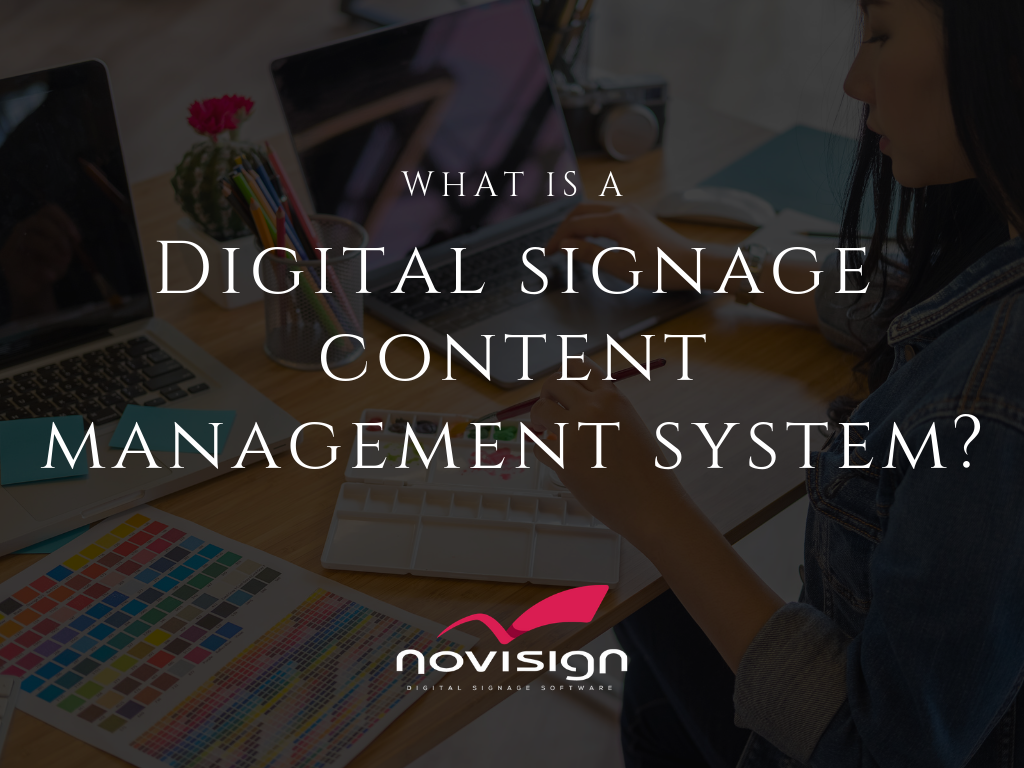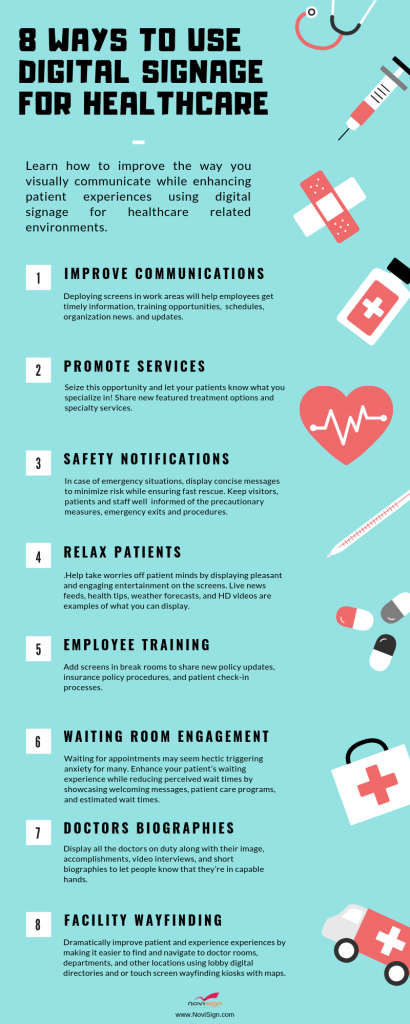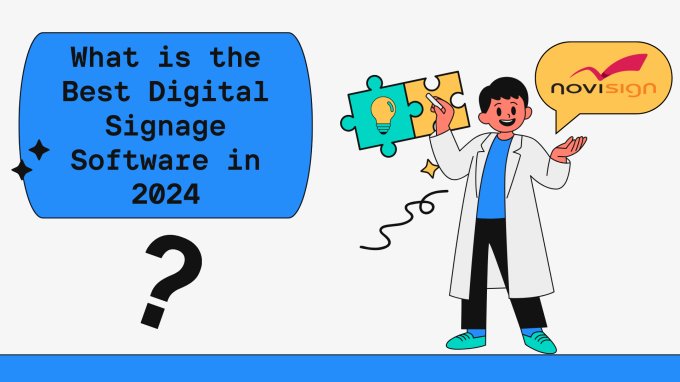
How can I use a digital signage content management system?
Let’s first start with what a digital signage content management system is.
A digital signage content management system is a cloud-based digital signage software solution that is used to create, update and manage the information being displayed on your screens. Using a computer and a web browser, you will be able to remotely log-in to a digital signage content management portal to access and edit your screens information.
What is included with a digital signage content management system?
A good digital signage content management system will come with all of the tools that you need to create and manage the content that is being displayed on your screens.
Design Studio
A design studio is one of the most important aspects of a digital signage content management system. It must be easy-to-use without sacrificing functionality. Using a design studio, you will be able to design and create your content.
Having a library of customizable templates to choose from and edit should also be included. This will help you get started faster while giving you good layout and content ideas.
Drag-and-Drop Widgets
Another critical component of a design studio is digital signage widgets. Widgets are items that you can add to the design. Videos, slideshows, scrolling tickers, weather, social media feeds and images are all examples of digital signage widgets. The widgets must be easy-to-use and customize.
Playlists
A digital signage playlist is a group of templates or layouts that you want to play on the screen. The digital signage playlist can be as simple as a slide show series that rotate through, or you can get advanced by prescheduling specific templates to play on particular dates or times. Using a digital signage playlist, you can also set recurring schedules that play individual templates on specific dates and times.
Remote Monitoring with Reports
It is pointless having digital signage up and running if you cannot see the status of your screens. Remote monitoring gives you the ability to view the status of your displays, see what playlists are playing, the last time the screens downloaded new content, and if the digital signage player is connected to the web.
In addition to monitoring, the option to run proof of reports is essential for advertising networks. Proof-of-play report will give you play analytics of what media files played, how many times they played and on many screens, the media played on.
Easy-to-use
One of the most important aspects of a digital signage content management system is usability. This means not having to spend 30+ hours in training to learn how to use the system.
From being able to design your template to updating the screens quickly, the overall process for creating and managing your digital signage must be smooth and efficient.
Admin Control
If you’re looking to setup sub-users to manage the digital signage screens content, then you will need a management console. A management console is a cloud-based tool that enables you to create new users, assign licenses and set user access levels. This makes the process of managing your users easy and quick.
Fast and Responsive Support
Honorable support is the backbone of any company. It doesn’t change with a digital signage content management system. From training to how fast a company gets back to you are essential items to look for in a digital signage content management system.
Conclusion
A digital signage content management system is the backbone of digital signage. It is what gets your content to the screens. When looking for a solution, make sure you look for ease-of-use and functionality.
Before you begin doing trials of digital signage, content management systems sit down and outline your goals and what your wanting to display on the screen. By knowing what you want to display on the screen, you will know what to look for when testing a digital signage content management system.
 info@novisign.com
info@novisign.com +972 (9) 794-7643
+972 (9) 794-7643 (646) 893-7770
(646) 893-7770



